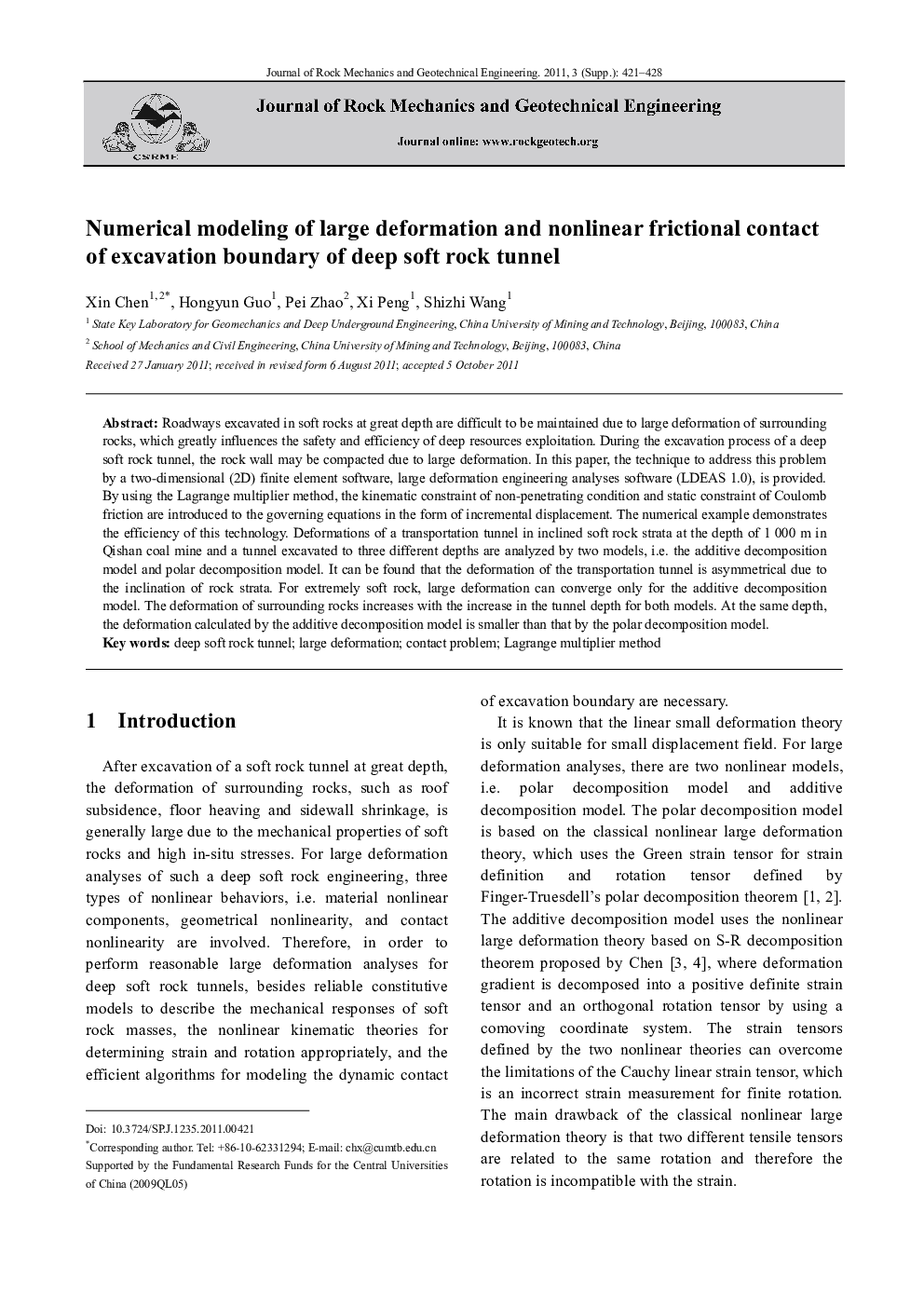| Article ID | Journal | Published Year | Pages | File Type |
|---|---|---|---|---|
| 286853 | Journal of Rock Mechanics and Geotechnical Engineering | 2011 | 8 Pages |
Roadways excavated in soft rocks at great depth are difficult to be maintained due to large deformation of surrounding rocks, which greatly influences the safety and efficiency of deep resources exploitation. During the excavation process of a deep soft rock tunnel, the rock wall may be compacted due to large deformation. In this paper, the technique to address this problem by a two-dimensional (2D) finite element software, large deformation engineering analyses software (LDEAS 1.0), is provided. By using the Lagrange multiplier method, the kinematic constraint of non-penetrating condition and static constraint of Coulomb friction are introduced to the governing equations in the form of incremental displacement. The numerical example demonstrates the efficiency of this technology. Deformations of a transportation tunnel in inclined soft rock strata at the depth of 1 000 m in Qishan coal mine and a tunnel excavated to three different depths are analyzed by two models, i.e. the additive decomposition model and polar decomposition model. It can be found that the deformation of the transportation tunnel is asymmetrical due to the inclination of rock strata. For extremely soft rock, large deformation can converge only for the additive decomposition model. The deformation of surrounding rocks increases with the increase in the tunnel depth for both models. At the same depth, the deformation calculated by the additive decomposition model is smaller than that by the polar decomposition model.
